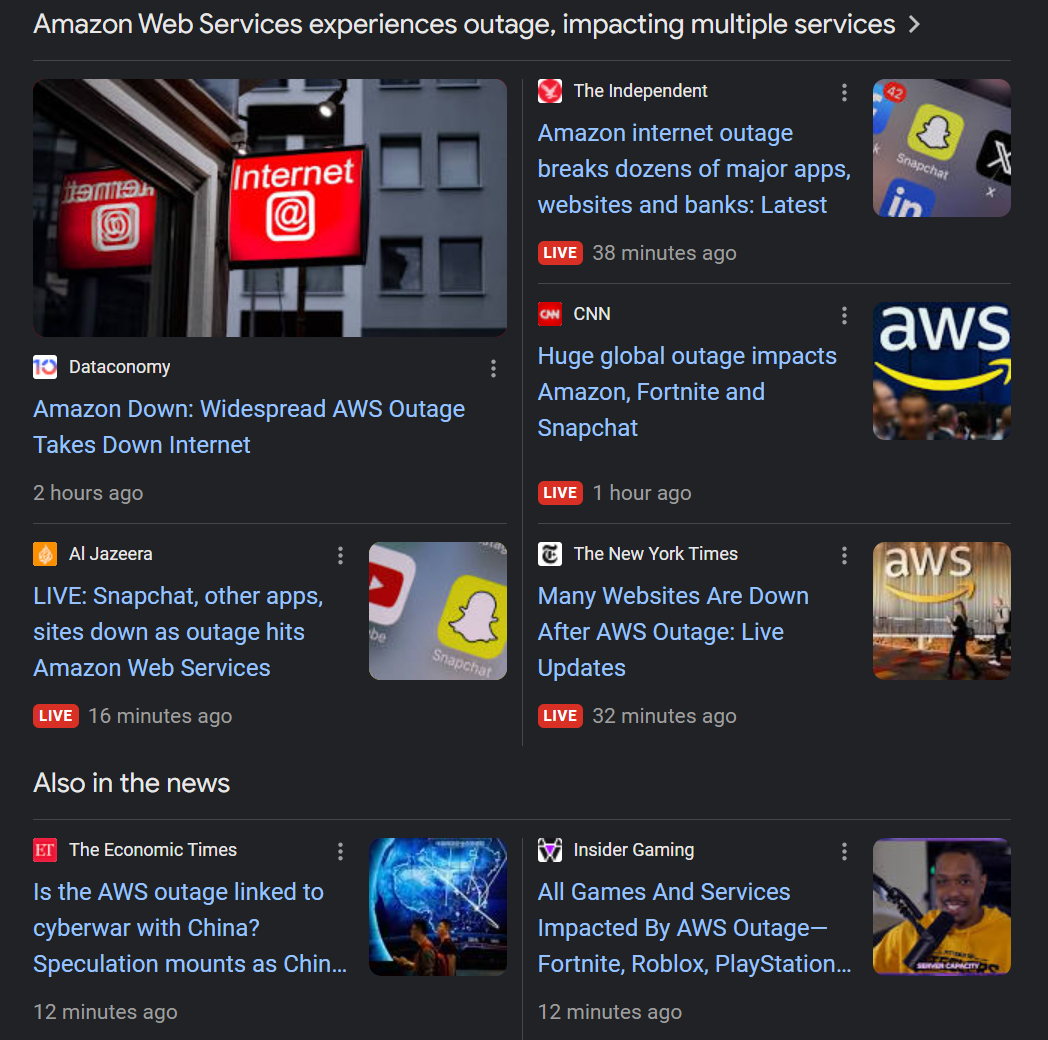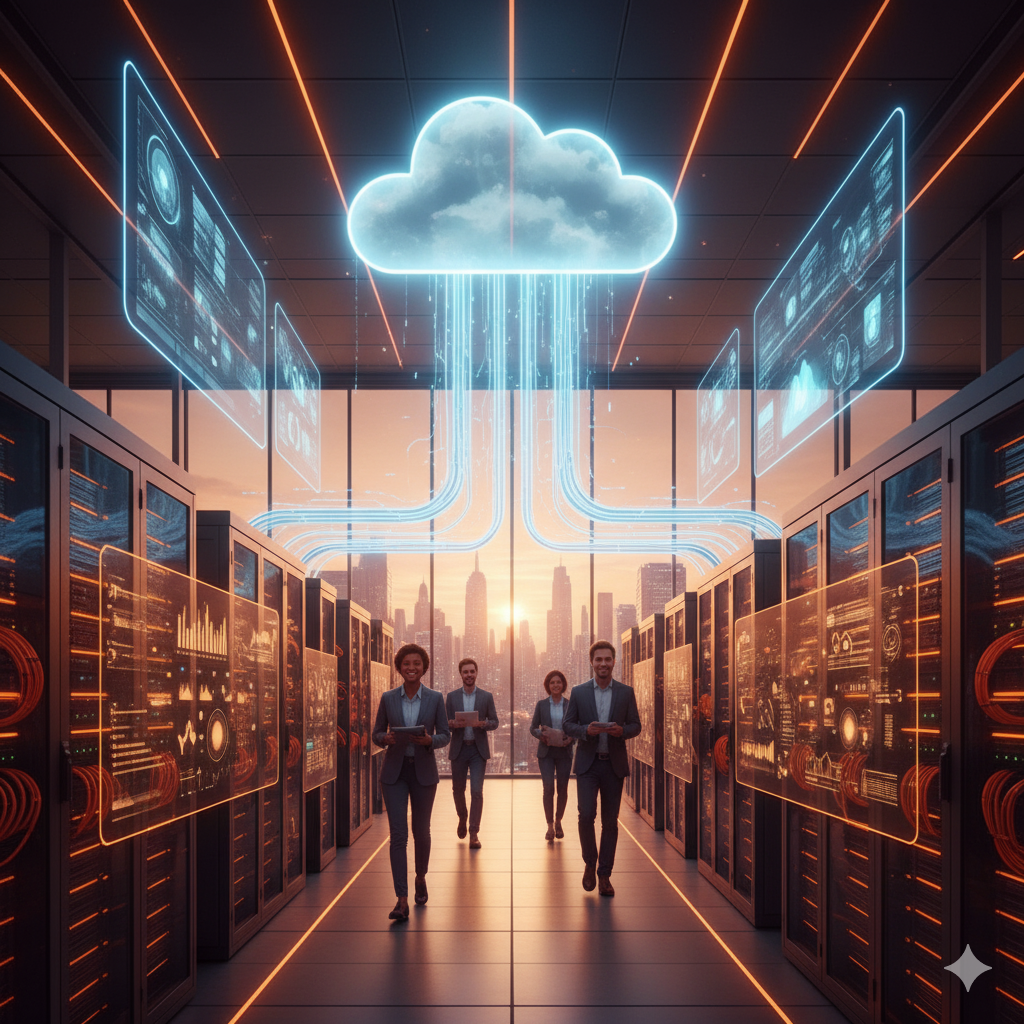The Hybrid Reality - When the Cloud Sneezes and Your Applications Catch a Cold
October 20, 2025
The Hybrid Reality: When the Cloud Sneezes and Your Applications Catch a Cold
A Message to Every Vendor Right Now: Please, Stop the Ambulance Chasing.
This morning, as I was heading out to the airport, the news hit: a major global service had a bit of a moment. A real “sit-in-the-lounge-looking-at-your-phone-while-your-systems-are-frozen” type of moment.

And to the infrastructure vendors who immediately dusted off their “Disaster Recovery” slide decks and started cold-calling, I have one request: Take a breath.
Everybody trips. Every system, every platform, and every piece of architecture—no matter how hyper-scale or distributed—will, eventually, have a bad day. The vendors who rush to point fingers at a momentary failure are missing the bigger picture: If the undisputed champions of the cloud can slip up, then consolidation on any single path is, quite frankly, just asking for trouble.
The Cloud Promise: Flexible, On-Demand… Until it Sends the Bill
That universal moment of technological humility brought me back to a story we’ve heard early this year. A prominent software company recently made headlines for looking at their massive, multi-million dollar annual compute bill and simply saying, “No, thanks.”
They decided to pull a truly staggering amount of data off the public cloud and onto on-premise hardware, resulting in significant, seven-figure savings every year.
Cloud compute and storage promised flexibility, infinite scale, and perfect elasticity. Yet here we are, still fighting outages, navigating labyrinthine fee structures, and facing the realization that the cost structure is often tailored for a scale that only about 1% of the industry actually achieves.
Cloud still means something, of course. It’s the perfect answer when you go from zero to production in minutes, when you need to scale to hundreds of thousands of users overnight, or when you’re just experimenting with a new feature you might scrap next month. The pay-as-you-go model is brilliant in those scenarios.
But for businesses with large, stable datasets, predictable workloads, or strict cost targets, the cloud’s hidden tax becomes painfully real. Consider:
-
The long-term commitment that doesn’t go away (i.e., that multi-year commitment you’re still paying for even if you stop using the service).
-
The surprise data egress fees, the storage tiering confusion, and the variable performance you get when you’re sharing a neighborhood with a thousand other tenants.
-
The moment when your primary vendor sneezes and your systems catch a three-day, flu-like crash.
So yes—cloud works. But the cloud is not, and never has been, the only answer.
The Infrastructure Exit: Cheaper (Maybe), Harder (Definitely)
When that software company moved their data back home, they weren’t just chasing cost savings; they were regaining predictability, ownership, and control. They made a substantial upfront capital expenditure, but they now run the operation for a paltry fraction of their previous cloud costs.
But let’s not sugarcoat this decision. This approach is not plug-and-play. Moving to owned infrastructure demands:
-
Capital expenditure and a refresh cycle that you have to actively plan and budget for.
-
Teams who are skilled, available, and dedicated to keeping the hardware tuned, patched, backed up, and monitored at 3 AM.
-
A mindset shift: you’re no longer “just running containers.” You now own the entire infrastructure stack, from the cooling units to the network cables.
The lesson? The savings aren’t guaranteed—and the work you thought you outsourced to a cloud vendor just got shipped back to your own IT department. The work doesn’t disappear; it just changes address.
The Balanced View: Cloud + Owned = Modern Hybrid
Here is where the magic (and the sanity) happens: neither cloud nor owned infrastructure is inherently right or wrong. What matters is the fit.
-
Use the cloud when you need maximum elasticity, global speed, rapid innovation, and can tolerate variable performance and cost.
-
Use owned infrastructure when your workload is large, utterly predictable, latency-sensitive, cost-fixed-budget-driven, or needs tight operational control.
-
Use hybrid or multi-cloud when your business demands both agility and stability.

When I finally landed at my destination, I realized that systems are a lot like flights: delays happen, weather happens, and relying on just one runway is essentially asking for trouble.
Bottom Line: Pick The Right Tool for The Job
Because at the end of the day, it’s not about proving you can run on cloud. It’s about proving you can keep the lights on.
